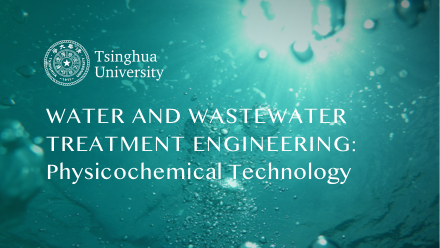
当前课程知识点:Geology and Engineering Geology > 13 Analysis on the Stability of the Rock Mass of the Ground Work > 13.2 Common Methods of Foundation Constructions > Chapter 13.2 Common Methods of Foundation Constructions
返回《Geology and Engineering Geology》慕课在线视频课程列表
返回《Geology and Engineering Geology》慕课在线视频列表
同学们好
欢迎来到地质学与工程地质课程
工程中遇到的岩土体
可以说是复杂多样
许多情况下是不能满足
工程稳定的要求
为了确保工程在建设
及运行期的安全性
通常需要提前
对地基进行处理
当然地基的类型不同
所采用的处理措施
也有很大的差异
当工程中遇到地基岩土体
属于软基时
通常采用的处理措施有
清基、加固、换土垫层
及桩基等等
清基也就是清除
对工程不利的表层物质
或者是说地基表层的
那些劣质土层
比如淤泥、泥炭
浮砂、黏质土、植物根系
及垃圾等等
当工程中遇到的地基为软土时
常用的加固措施
通常有砂井、真空预压
堆载预压、碾压和夯实等等
砂井呢
主要是用于处理
饱和软粘土地基
以增加土层的排水途径
缩短固结排水时间
加快固结速度
以提高土体的强度
广泛地用于水闸
和岸坡工程等等
真空预压呢
它是在需要加固的
软土地基表面先铺设砂垫层
然后埋设垂直的排水管道
再用不透气的密封膜
使它与大气隔绝
薄膜四周埋入土中
通过砂垫层内设置吸水管道
用真空装置进行抽气
使它形成真空
增加地基的有效应力
堆载预压有时又叫
堆载预压排水固结法
它是通过在场地
先用预定的荷载加压
使土体中的孔隙水
沿排水板排出 逐渐地固结
地基发生沉降
同时强度逐渐提高
它一般适用于处理
10到20、30米的
软土地基
碾压它是用碾压设备
把场地表层的地基土层
进行压实
一般适用于碎石土
砂土、粉土、
低饱和度粘性土
及杂填土等场地
它也是路基、堤坝等
土方工程中常用的加固方法
夯实它是用重锤反复
自由坠落的方法
对地基或者是填筑土石料
进行夯基
以提高它的密度
根据夯击能可以分为
表层夯实和强力夯实
表层夯实
锤重一般为20到40千牛
落距一般在3到5米
由于锤体较轻
锤体直径和落距较小
产生的冲击能也比较小
所以有效夯实深度不大
一般为锤体直径的一倍左右
一般适用于夯实厚度小于3米
稍湿的杂填土、粘性土、
砂性土及湿陷性黄土地基等等
强夯法可以大幅度地
提高地基的强度
降低地基的可压缩性
从而改善地基
抵抗振动液化的能力
和消除湿陷现象
由于锤重和落距较大
冲击能也较大
所以有效夯实深度
也比较大
最大可以达到10米
当地基中有较厚的
粘土、淤泥
而又无法完全清除的情况下
可以挖去一定厚度的软土层
而用人工填筑的砂垫层来代替
也就是砂层置换
它主要起到扩大基础底面积
加大基础深度的作用
并作为基础的一部分
所以要求它的强度、
密度及施工力
应达到相应基础的基本条件
在深厚的软土地基上
当建筑物荷载较大
或对地基的变形
及稳定性要求较高时
而且采用其它的处理措施
不能满足要求的情况下
通常采用桩基础
桩基础具有承载力高
沉降量小
和沉降均匀的优点
在软土地区
地基处理工程中广泛应用
从桩的承载方式上
可以将桩基分为两类
一类是桩端直接支撑在硬土层
或基岩上的端承桩
另外一类是摩擦桩
也就是桩身全部在软土层中
利用桩身表面与土层间的摩擦力
来支撑上部结构的荷载
根据成桩方式
又可以分为预制桩、钻孔灌注桩
人工挖孔桩等等
对于工程中遇到的硬基
如果不能满足工程要求
通常采用的措施有
清基、岩体加固
降低扬压力
软弱带处理
改善建筑物结构等措施
清基与软基处理相类似
也是将地基表层强风化
破碎松动的岩体及
浅部的软弱夹层等
彻底地清除
使工程结构坐落在
新鲜的完整的基岩上
岩体加固呢
主要包括固结灌浆和锚固
固结灌浆是通过钻孔
将胶结材料
比如水泥浆和水泥玻璃等
压入岩层中
使破碎的岩体
和裂隙发育的岩体
胶结形成整体
以增大岩体的强度
提高岩体的稳定性
灌浆孔的布设
一般是按照这种梅花形布置
当地基岩体中发育
有控制岩体滑移的软弱结构面时
通常采用预应力锚索和锚杆
也就是锚固的方式来进行加固
降低扬压力也是提高
坝基抗滑稳定性的重要措施
主要包括防渗墙
帷幕灌浆和排水孔等等
如果地基中含有软弱带
比如断层破碎带时
需要采用相应的工程措施
以提高它的承载力
适应地基应力的要求
改善它的弹性性能
使它与两侧的岩体弹性相近
防止过大的应力集中
或过多的不均匀变形
并且提高它的抗剪强度
以增强地基的抗滑能力
同时增大它的抗渗能力
避免大量渗漏、渗透破坏
或扬压力过大
对于陡倾角的软弱带
比如倾角大于60度
通常采用混凝土塞
混凝土梁、混凝土拱的方法
混凝土塞一般适用于
软弱带宽度小于3米的情况
混凝土梁和混凝土拱则适用于
软弱带宽度大一点的情况
对于缓倾角的软弱带
比如小于30度
一般采用清除软弱带
回填混凝土的方法
如果软弱带较深
还可以采用竖井
和平洞相结合的办法
来开挖清除
并回填混凝土
形成混凝土键
来提高它的抗滑稳定性
另外呢为了保证地基稳定性
还可以采用改善建筑物结构
以适应地基、地质条件的措施
比如增大坝体断面
以加大竖向荷载
加深齿墙
以增大坝基的抗滑稳定性
延长上下游防冲板
防止坝基稳定性恶化
并提高稳定性
预留沉降缝
以消除不均匀沉降的影响
好 这节课我们简单介绍了
工程中常用的地基处理措施
通过这节课的学习
同学们要了解
这些处理措施
及适宜的地质条件
以在具体工作时
选择合适的处理措施
当然还需查阅具体的工程规范
进行详细的方案设计
-0.1 Human Engineering Activities and the Geological Environment
--Chapter 0.1 Human Engineering Activities and the Geological Environment
-0.2 Tasks for Engineering Geology
--Chapter 0.2 Tasks for Engineering Geology
-0 Quiz--Homework
-1.1 Formations and Evolution of the Earth
--Chapter 2.1 Formations and Evolution of the Earth
-1.2 Basic Attributes of the Earth
--Chapter 1.2 Basic Attributes of the Earth
-1.3 Construction of the Geo-sphere and the Geological Processes
--Chapter 1.3 Construction of the Geo-sphere and the Geological Processes
-1 Quiz--Homework
-2.1 Crustal Movement
--Chapter 2.1 Crustal Movement
-2.2 Magmatism
-2.3 Metamorphism
-2.4 Earthquake
-2 Quiz--Homework
-3.1 Introduction
-3.2 Weathering Effects
--chapter 3.2.1 Physical Weathering
--chapter 3.2.2 Chemical and Biological Weathering
--chapter 3.2.3 Weathering Products and Influencing Factors of the Weathering Process
-3.2 Weathering Effects--Homework
-3.3 Geological Effects of the Flowing Surface Water
--chapter 3.3.1 Geologic Process of Temporary Torrents
--chapter 3.3.2.1 River Erosion Effects
--chapter 3.3.2.2 River Transport and Sedimentation Effects
-3.3 Geological Effects of the Flowing Surface Water--Homework
-3.4 Geological Effects of Winds
--Chapter 3.4 Geological Effects of Winds
-3.4 Geological Effects of Winds--Homework
-3.5 Geological Effects of Glaciers
--Chapter 3.5 Geological Effects of Glaciers
-3.5 Geological Effects of Glaciers--Homework
-3 Quiz Easy--Homework
-3 Quiz Enhanced--Homework
-4.1 Minerals
--Chapter 4.1.1 Minerals and Their Morphological Characteristics
--4.1.2 Minerals and Rocks-Mineral Characteristics-Physical and Mechanical Prop
--Chapter 4.1.3 Visual Identification of Common Minerals
-4.1 Minerals--Homework
-4.2 Magmatic Rocks
--Chapter 4.2.1 Main Mineral Compositions of Magmatic Rocks
--Chapter 4.2.2 Texture and Structure of Magmatic Rocks
--Chapter 4.2.3 Common Classification and Identification Methods for Magmatic Rocks
--Chapter 4.2.4 Basic Characteristics of Common Magmatic Rocks Ⅰ
--Chapter 4.2.5 Basic Characteristics of Common Magmatic Rocks Ⅱ
-4.2 Magmatic Rocks--Homework
-4.3 Sedimentary Rocks
--Chapter 4.3.1 Material Compositions of Sedimentary Rocks
--Chapter 4.3.2 Texture and Structure of Sedimentary Rocks
--Chapter 4.3.3 Basic Characteristics of Common Sedimentary Rocks
-4.3 Sedimentary Rocks--Homework
-4.4 Metamorphic Rocks
--Chapter 4.4.1 Mineral Composition and their Texture andStructure
--Chapter 4.4.2 Basic Characteristics of Metamorphic Rocks
-4.4 Metamorphic Rocks--Homework
-第4章 Quiz Easy--Homework
-第4章 Quiz Enhanced--Homework
-5 The Geologic Times
--Chapter 5 The Geologic Times
-5 Quiz--Homework
-6.1 Horizontal Structure and Dipping Structure
--Chapter 6.1 Horizontal Structure and Dipping Structure
-6.2 Fold Structure
-6.3 Fault Structure
--Chapter 6.3.2 Characteristics and Types of Faults
--Chapter 6.3.3 Fault Identification in the Wild
-6 Quiz Easy--Homework
-6 Quiz Enhanced--Homework
-7.1 ntroduction
--Chapter 7.1.1 Types of Geological Maps
--Chapter 7.1.2 Scale of Geological Maps
-7.2 Presentation of the Geological Maps
--Chapter 7.2.1 Formation Lithology
--Chapter 7.2.2 Geological Structure
--Chapter 7.2.3 Contact Relations Between Stratas
-7.3 Reading and Analysis of the Geological Maps
--Chapter 7.3 Reading and Analysis of the Geological Maps
-7 Quiz Easy--Homework
-7 Quiz Enhanced--Homework
-8.1 Basic Conceptuals
--Chapter 8.1 Basic Conceptuals
-8.1 Basic Conceptuals--Homework
-8.2 Reservation and Movements of Ground Water
--Chapter 8.2 Reservation and Movements of Ground Water
-8.2 Reservation and Movements of Ground Water--Homework
-8.3 Movements of the Ground Water
--Chapter 8.3 Movements of the Ground Water
-8.3 Movements of the Ground Water--Homework
-8.4 Ground Water Quality
--Chapter 8.4 Ground Water Quality
-8.4 Ground Water Quality--Homework
-8.5 Ground Water Related Issues on Engineering Geology
--Chapter 8.5 Ground Water Related Issues on Engineering Geology
-8.5 Ground Water Related Issues on Engineering Geoligical Problem--Homework
-8 Quiz Easy--Homework
-8 Quiz Enhanced--Homework
-9.1 Soil Mass
-9.1 Soil Mass--Homework
-9.2 Attributes of Soils
--Chapter 9.2.1 Physical Properties of Soil
--Chapter 9.2.2 Water-Physical Properties of Soil
--Chapter 9.2.3 Mechanical Properties of Soil
-9.2 Attributes of Soils--Homework
-9.3 Engineering Classification of Soils
--Chapter 9.3 Engineering Classification of Soils
-9.4 Special Soils and Its Engineering Attributes
--Chapter 9.4.1 Soft Soil and Its Engimeering Attributes
--Chapter 9.4.2 Loess and Its Engineering Attributes
--Chapter 9.4.3 Expansive Soil adn Its Engineering Attributes
-9.4 Special Soils and Its Engineering Attributes--Homework
-9 Quiz Easy--Homework
-9 Quiz Enhanced--Homework
-10.1 Introduction
--10.1 Introduction--Homework
-10.2 Physical and Water-Physical Properties of Rocks
--Chapter 10.2 Physical and Water-Physical Properties of Rocks
--10.2 Physical and Water-Physical Properties of Rocks--Homework
-10.3 Mechanical Properties of Rocks
--Chapter 10.3.1 Deformation Characteristics
--10.3 Mechanical Properties of Rocks--Homework
-10.4 Structural Plane and Structural Body of Rock Mass
--Chapter 10.4 Structural Plane and Structural Body of Rock Mass
--10.4 Structural Plane and Structural Body of Rock Mass--Homework
-10.5 Features and Mechanical Properties of the Structural Plane
--Chapter 10.5.1 Properties of Structural Plane
--Chapter 10.5.2 Mechanical Properties of Structural Plane
--10.5 Features and Mechanical Properties of the Structural Plane--Homework
-10.6 Mechanical Properties of Rock Mass
--Chapter 10.6 Mechanical Properties of Rock Mass
--10.6 Mechanical Properties of Rock Mass--Homework
-10.7 Engineering Classification of Rock Mass
--Chapter 10.7.1 Engineering Classification of Rock Mass Ⅰ
--Chapter 10.7.2 Engineering Classification of Rock Mass Ⅱ
--10.7 Engineering Classification of Rock Mass--Homework
-10 Quiz Easy--Homework
-10 Quiz Enhanced--Homework
-11.1 Slope Deformation and Destruction
--Chapter 11.1.1 Slope Deformation
--Chapter 11.1.2 Slope Destruction
-11.1 Analysis on the Stability of Slopes--Homework
-11.2 Factors on the Stability of Slopes
--Chapter 11.2 Factors on the Stability of Slopes
-11.3 Analysis on the Stability of Slopes
--Chapter 11.3 Analysis on the Stability of Slopes
-11.3 Analysis on the Stability of Slopes--Homework
-11.4 Structural Analysis Method on Rocky Slope Stability
--Chapter 11.4.1 Stereographic Projection Method Ⅰ
--Chapter 11.4.2 Stereographic Projection Method Ⅱ
-11.5 Measures for Preventing and Controlling the Slope Deformation
--Chapter 11.5 Measures for Preventing and Controlling the Slope Deformation
-11.5 Measures for Preventing and Controlling the Slope Deformation--Homework
-11 Quiz Easy--Homework
-11 Quiz Enhanced--Homework
-12.1 Underground Caverns and the Stress Distribution
--Chapter 12.1 Underground Caverns and the Stress Distribution
-12.1 Underground Caverns and the Stress Distribution--Homework
-12.2 Deformation and Destruction of the Adjacent Rocks
--Chapter 12.2.1 Brittle Adjacent Rock
--Chapter 12.2.2 Plastic Surrounding Rock and Surrounding Rock Stability Sign
-12.3 Factors on Stability of the Adjacent Rocks
--Chapter 12.3 Factors on Stability of the Adjacent Rocks
-12.4 Measures for Preventing Instability of the Adjacent Rocks
--Chapter 12.4 Measures for Preventing Instability of the Adjacent Rocks
-12 Quiz--Homework
-13.1 Dam Foundation of the Water Conservancy Project
--Chapter 13.1.1 Dam Types and Requirements for Engineering Geological Conditions
--Chapter 13.1.2 Deformation Failure Mode and Stability Analysis
-13.2 Common Methods of Foundation Constructions
--Chapter 13.2 Common Methods of Foundation Constructions
-13 Quiz--Homework
-14.1 Reservoir Leakage
--Chapter 14.1 Reservoir Leakage
-14.2 Stability of the Reservoir Bank
--Chapter 14.2 Stability of the Reservoir Bank
-14.3 Reservoir Surrounding Immersions and Sedimentations
--Chapter 14.3 Reservoir Surrounding Immersions and Sedimentations
-14 Quiz--Homework
-15.1 Introduction
-15.2 Engineering Geological Mapping
--Chapter 15.2.1 Research Content
--Chapter 15.2.2 Structural Plane Statistics
-15.3 Engineering Geological Exploration and Field Experiments
--Chapter 15.3 Engineering Geological Exploration and Field Experiments
-15.4 Instructions on the Geological Compass
--Chapter 15.4 Instructions on the Geological Compass
- Quiz--Homework





